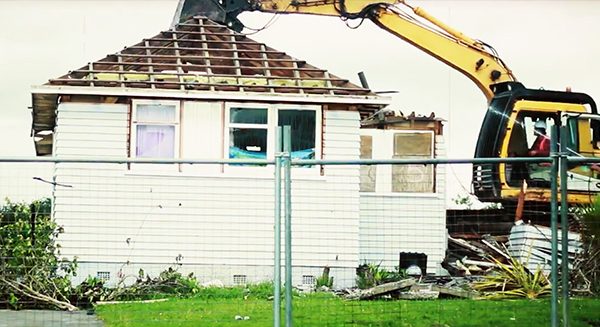The re-branding of Glen Innes: redevelopment or disestablishment?
27 Nov, 2017
The disestablishment of communities within gentrification processes is happening in Auckland under the guise of redevelopment. The ironic rebranding of Glen Innes as To Taiko Bay occurs while large numbers of low-income tenants, including many Māori and Pacific people, are being moved out, passed on, and in the case of many elderly, passed over. Gentrification as part of a boom and bust cycle dispossesses the working poor and contributes to greater inequality from which developers and investors profit.
Geographer David Harvey calls this process of displacement “accumulation by dispossession”. For geographer and anthropologist Neil Smith, gentrification begins with the disinvestment of capital – in this case, the reduction in number or outright removal of state houses in Glen Innes. Destruction of public housing through disinvestment is supported by the New Zealand government and “…creates economic rewards based on private ownership of housing for profit as opposed to the belief that housing is a right for all.” (Wallis, B. 1991)1.
The current housing crisis in Aotearoa shares similarities with the situation of the 1930s. The solution of the 1930s housing shortage is currently being demolished in more ways than one. It is possible to respond to this current crisis in a number of different ways, but selling off valuable state housing in order to balance the country’s books does not solve the housing crisis. In fact, this contributes to an economy predicated on poverty, which in itself reduces a country’s economy.
What is affordable housing in Tāmaki Makaurau today, where the 2013 census recorded that over 56% of the population are renters? How can we improve their housing experience? In short, public housing, or state housing as we know it, is instrumental in preventing higher house prices and rent costs (Hodkinson and Lawrence 2011)2.
When we address Tāmaki Makaurau’s housing problems, we should take notice of other urban planning solutions, including ‘failed’ developments, and we can ask what we require from homes and the society we belong to. We can look to countries with highly successful models of renting, with affordable secure housing that enables people to build community and truly experience ‘home’.
While building doorways and roofs we need to look at how housing enables connection, belonging, and the building of community over time. Solutions certainly don’t require the destruction of existing communities. For the last six years, one such community has been fighting back. Glen Innes tenant Ioela (Niki) Rauti has been defending her right to remain in the state home she has lived in for 21 years.
Is housing a right for all? The human right to adequate housing is a binding legal obligation of the state of New Zealand recognised in the 1948 Universal Declaration of Human Rights. So why are thousands of state houses empty and thousands of people homeless?
More information can be found at:
www.saveourhomes.co.nz/blog
www.facebook.com/THISHOMEISOCCUPIED/
Dieneke Jansen is a Senior Lecturer in the School of Art and Design, and received the Faculty of Design and Creative Technologies’ Critic and Conscience of Society Award in 2016 for artwork projects that focus on the conditions of housing in Jakarta, Amsterdam and Tāmaki Makaurau.
References
1Wallis, B. (1991) If you Lived Here: The City in Art, Theory, and Social Activism, a Project by Martha Rosler. The DIA Foundation, Bay Press, Seattle, Washington.
2Hodkinson, S and Lawrence, B. (2011). The Neoliberal Project, Privatisation and the Housing Crisis. Corporate Watch Magazine, No. 50. Retrieved from http://www.corporatewatch.org/magazine/50/autumnwinter-2011/neoliberal-project-privatisation-and-housing-crisis
